- Home
- Q. Patrick
Hunt in the Dark
Hunt in the Dark Read online
Hunt in the Dark
Hugh Wheeler (left) and Richard Webb (right) with
unidentified woman at Steel Pier, Atlantic City, c. 1935
Hunt in the Dark
by Q Patrick
Copyright © 2021
by Crippen & Landru Publishers, Inc.
Published by arrangement with the estate of Hugh Wheeler Cover artwork by Gail Cross
Lost Classics logo, adapted from a drawing by Ike Morgan, ca. 1895
FIRST EDITION
ISBN (cloth edition): 978-1-936363-52-0 ISBN (trade softcover): 978-1-936363-53-7
Printed in the United States of America on acid-free, recycled paper
Crippen & Landru Publishers
P.O. Box 532057 Cincinnati, OH 45253
USA
Jeffrey A. Marks, Publisher Douglas G. Greene, Senior Editor
e-mail: [email protected] web: www.crippenlandru.com
Contents
Introduction by Curtis Evans
The Frightened Landlady
Killed by Time
The Hated Woman
Hunt in the Dark
The Woman Who Waited
This Way Out
Sources
Introduction by Curtis Evans
Hunt in the Dark and Other Fatal Pursuits collects a half dozen short works of crime fiction (two novellas, two novelettes and two short stories) by Q. Patrick, aka Richard “Rickie” Wilson Webb and Hugh Callingham Wheeler, two of the greatest Anglo-American masters of mid-century murder. Included are the presumably final recovered tales of the criminous adventures of Rickie and Hugh’s series characters Peter and Iris Duluth (“Hunt in the Dark”) and Dr. Hugh Westlake (“The Frightened Landlady”), as well as four other tales of deathly doings: the ingenious shorts “Killed by Time” and “The Woman Who Waited” and the noirish novelettes “The Hated Woman” and “This Way Out.” Within the pages of this fine volume, readers will find dark fantasies of murder, full of flawed men and fatal women, as they walk the wilder, pulpier side of Rickie Webb and Hugh Wheeler’s rich legacy of short crime fiction.
*******
Initially in the 1930s Rickie Webb and Hugh Wheeler lucratively tapped diverse markets for their short fiction in Street & Smith’s Detective Story Magazine, one of America’s premier purveyors of “pulp” crime fiction (so named for its cheap pages made from wood pulp), which aimed primarily at a male audience, and in The American Magazine, a so-called “slick” (so named on account of its more expensive, glossy paper) with a readership composed to a great extent of middle-class women. Among the pulp detective fiction which Rickie and Hugh published at this time were three serial novels and a novella, all of which appeared under the pseudonym Q. Patrick in Detective Story Magazine, about Dr. Hugh Cavendish Westlake, a widowed New England country doctor with an irrepressibly rambunctious young daughter, Dawn, who manages, albeit usually inadvertently, to help her bemused father solve, with the considerable help of folksy series policeman Inspector Cobb, the myriad fiendish murders which cross his path. That Hugh Cavendish Westlake shares the same initials—H. C. W.—with Hugh Callingham Wheeler surely is no accident.
The serial Dr. Westlake novels--The Dogs Do Bark, The Scarlet Circle and Murder or Mercy?—all were later published in hardback editions by “Jonathan Stagge,” albeit in the case of The Scarlet Circle only after a lag of seven years, due perhaps to the possibility that the pulp novel in 1937 may have helped inspire two horrific real-life copycat murders in Queens, New York. (See my article “Jonathan Stagge’s The Scarlet Circle and the Scarlet Circle Slayer” at my blog The Passing Tramp.) However, the second Hugh Westlake adventure, the novella “The Frightened Landlady,” which was originally published in Detective Story Magazine in December 1935, a month after The Dogs Do Bark, was never expanded as a novel. It now appears here, in print in English for the first time in eighty-five years—an exciting event indeed for admirers of Jonathan Stagge’s ingenious murder cases.
Dr. Westlake’s daughter Dawn does not put in an appearance in this exceptionally grim story, happily for her being “away at the shore with friends.” However, the doctor’s investigative partner Inspector Cobb, Chief of Police of Grovestown (where the doctor, who normally resides twenty miles away in Kenmore, is substituting for his vacationing colleague Dr. Hammond), provides some timely assistance. Young Dawn, who is present in spirit if you will, manages to do her part as well to help her father and Inspector Cobb crack the weird and gruesome case, which turns extremely nasty. “The affair ended with a brutal murder and the unearthing of another crime so fantastic in its twisted abnormality that I cannot help wondering whether I am violating the ethics of my profession in setting it down,” Dr. Westlake forebodingly announces in the first lines of the novella. What stouthearted mystery fan could resist?
In an opening reminiscent of the strange consultations once held in London by a certain eminent detective at 221b Baker Street, Dr. Westlake is visited by Mrs. Eva Bellman, a highly respectable sixtyish Grovestown landlady who believes she must be suffering from some malady of the eyes (like Hugh Wheeler in real life), on account of the seemingly impossible transformations which she imagines have been taking place around her in her building. Gladioluses in a vase have turned into zinnias and back again, for example, while a pet canary has gone from life to death (stabbed with a paper knife and pinned to a pillow) to life again. Dr. Westlake assures the frightened landlady that there is nothing physically wrong with her, yet he is highly intrigued all the same by her problem. “Possibly my recent connection with the unpleasant series of murders near my home in Kenmore had given me a taste for the bizarre,” he speculates, recalling the ghastly case earlier detailed in Detective Story Magazine in The Dogs Do Bark.
It is not long before Dr. Westlake calls upon Mrs. Bellman at her building, where he finds that things are even queerer than he had imagined. “The Frightened Landlady” is a fine baroque mystery tale with some classic twists and a twisted crime. To be sure, it shares affinities with another Webb and Wheeler work, “Danger Next Door,” a non-series Q. Patrick novel which appeared in Detective Story Magazine in May 1937 and fourteen years later was published by Q. Patrick in hardcover under the same name (now long out-of-print); yet Hugh Westlake fans will by no means want to miss “The Frightened Landlady.” It makes a fine (and presumably final) addition to the distinguished Hugh Westlake crime canon.
“Killed by Time” and “The Hated Woman” like “The Frightened Landlady” are among the earliest pulp crime pieces published by Rickie and Hugh. They appeared in Detective Story Magazine in, respectively, October 1935 and February 1936. The former is a pure problem detective story, though a rather memorably gruesome one, along the lines of something mystery genre master John Dickson Carr might have devised. In it Inspector Groves (of Grovestown perhaps?) is summoned on the scene to investigate the murder, at the home of esteemed brain surgeon Doctor Cobden (shades of Inspector Cobb), of Cobden’s son-in-law, Julius van Holdt, a woman-chasing wastrel. The dead man was discovered gruesomely slain on the couch in Doctor Cobden’s office, his face “no longer calm or handsome”: “One eye was closed as if in sleep, but the other—or rather, the place where the other had been—was a hideous red gash, a gaping void. It was as though someone had stabbed persistently and accurately at the eye with a sharp, thin weapon.”
“[P]ossibly an ice-pick,” speculates the phlegmatic medical examiner. Steel yourselves, readers!
The novelette “The Hated Woman” presents one of the most unsympathetic titular in the Webb-Wheeler canon in the person of Lila Trenton, the eponymous hated woman. Lila, it soon becomes manifest, is very hated indeed, and deservedly so, being a selfish, spiteful individual concerned only with pr
eserving her own diminishing physical charms (past forty, Lila’s looks are being “killed by time”), so that she can continue successfully to pursue handsome young men, her longtime marriage notwithstanding. When she is discovered dead in the kitchen of her apartment at the Vandolan Hotel, her head bloodily battered by blows from a wood hatchet, there is no shortage of suspects in her murder, including her long-suffering husband, Paul Trenton, a chemistry researcher at the local university; Larry Graves, a strapping yet weak-willed blond whom the smitten Lila had loaned five thousand dollars, with sexual conditions attached, to start an auto garage; Larry’s girlfriend Claire French, the coolly attractive and determined owner of her own beauty parlor; and Sam Nolan, the Vandolan Hotel’s strapping brunet electrician, patently on the make. (“If you ever need me, Mrs. Trenton, it’s easy to get me,” he pointedly advises Lila.) The police are stymied by the multiplicity of suspects (truly Lila and Paul’s apartment was something like Grand Central Station on the night of the murder), leaving Paul Trenton’s likeable colleague in the chemistry department at the university, Professor Gilbert Conroy, to bring the crime home to its perpetrator.
Like “The Frightened Landlady” and “Killed by Time,” “The Hated Woman” has the fingerprints of Rickie Webb all over it, in its depictions of nasty people and grisly murders and its transagressive gay subtext, among the most prominent in the writing of Webb and Wheeler. In Lila’s relationships with Larry Graves and Sam Nolan, it is easy to discern what Marc Fisher in “The Life of a Trophy Boy” termed the “gay paradigm” of an older gay sugar daddy, his looks fading, avidly pursuing hustling young hunks.1 “You’re nothing but a gigolo—a gigolo,” a disgusted (and somewhat priggish) Claire castigates Larry at one point, while studly Sam Nolan, clad in his overalls, provocatively comments to Lila, “Geez…I wish I was a girl. Maybe then you could use me around this place, Mrs. Trenton. I’m pretty good at housework, too. Used to be a houseboy when I was a kid.” A positive portrayal in the novelette of a same-sex relationship can be seen with middle-aged academic colleagues and best friends Paul Trenton and Gilbert Conroy, who resemble pals of Rickie’s from the University of Pennsylvania and other colleges. Seven years after the publication of “The Hated Woman,” Rickie Webb ironically made a disastrous five-month marriage with a noted woman author, Frances Winwar, starkly contrasting with the years of contentment he enjoyed with his writing partner Hugh Wheeler, who also was his companion of many years.
A much happier depiction of a heterosexual couple is found in “Hunt in the Dark” (published in October 1942 in Short Stories), which—like “Death Rides the Ski-Tow” and “Murder with Flowers,” both of which appeared in The American Magazine the previous year (and have since been collected in Crippen & Landru’s 2016 volume The Puzzles of Peter Duluth)— is another madcap wartime adventure of theater producer Peter Duluth and his charming and glamorous actress wife Iris, lead characters in Rickie and Hugh’s Patrick Quentin “Puzzle” series of novels.
1. See Washington Post, 25 July 1997, at https://www.washingtonpost.com/archive/lifestyle/1997/07/25/the-life-of-a-trophy-boy/f978dd1a-2f2e-4439-b6454ede046c78e7/?noredirect=on. The article is a meditation on the life and death of Andrew Cunanan, a “high-class gay prostitute” and serial murderer who infamously slew fashion designer Gianni Versace in 1997.
Even here, however, some gay subtext is slipped in when Peter tells us that on a sleuthing visit to a Manhattan book and record shop, he pauses occasionally to pretend to glance at something, like “an old copy of Leaves of Grass” and “a Strength and Health magazine from 1936.”
This time Peter and Iris run afoul of a deadly terrorist plot against the United States, recalling the “Black Tom” explosion of 1916, an act of German sabotage at a major munitions center at Black Tom, an artificial island adjacent to Liberty Island in New York Harbor. (Peter specifically mentions the Black Tom attack.) On the side of Peter and the irrepressible Iris in their valiant against-the-odds attempt to foil the Nazis’ deadly machinations (Iris has “always been the Lady Macbeth of our team, taking danger and disaster in her stride,” observes Peter), are the couple’s indomitable black cook Aloma and her hulk of a husband, Rudolph, the latter, we are cheekily told, mysteriously returned “after a long absence upstate.” The ultimate moral of “Hunt in the Dark” seems to be, “Good help is hard to find,” so hang onto it when you find it. Within a few years, Rickie and Hugh at their home at Twin Hills Farm in Monterey, Massachusetts would hire a handsome black male cook, Johnny Grubbs, a move which ironically would help lead to the irrevocable sundering of Rickie and Hugh’s companionship, something which had not happened when Rickie had been briefly married to Frances Winwar. We return to the formal problem detective short story with “The Woman Who Waited,” a fine brief tale of detection which would have melded perfectly with the lauded Lieutenant Trant short stories that Rickie and Hugh published over the decade from 1945 to 1955 (and which have since been collected in Crippen & Landru’s 2019 volume The Cases of Lieutenant Timothy Trant). In “The Woman Who Waited,” which first appeared in The Shadow in January 1945, Trant stand-in Inspector Macrae is tasked with determining the identity of the mysterious woman in black who shot and killed Ellery Trimble with his own gun in his parked car outside his Twin-Town Department Store, “the one big league emporium in the dual community of Stuart-Cartersville.” Left bizarrely sprawled across the dead man’s corpse are a dozen “pairs of silk—real silk—stockings,” resembling nothing so much as “grotesque, elongated caterpillars.” Macrae manages to pin the guilt for a truly audacious act of murder on the correct culprit, doubtlessly one whom Lieutenant Trant, with his well-known penchant for murderesses, would have relished encountering.
Like “Hunt in the Dark” and “The Woman Who Waited,” “This Way Out,” published in Mystery Book Magazine in March 1947, has sophisticated touches reflective of the fine hand of Hugh Wheeler, a still youngish man of thirty-five when the novelette was published. Hugh’s writing talent had burgeoned over the years while that of Rickie, who suffered from various debilitating physical and mental maladies after his return from wartime service with the Red Cross in Hollandia, New Guinea, had decayed. (Hugh, who suffered from diplopia, or double vision, served stateside in the Medical Corps at Fort Dix, New Jersey.) In Hugh’s hands “This Way Out” rises from the pulpish danses macabres of the “The Frightened Landlady” and “The Hated Woman” to the operatic heights of the tragically doomed romances of Forties film noir.
As in many of the postwar film noirs, the protagonist of “This Way Out” is a disillusioned World War Two veteran returned home, like Rickie Webb, from overseas service into a world of hurt. In this case it is Steve Glenn, who when he beats up playboy Tony Dort at the beginning of the story has been officially honorably discharged from the Army for but a few hours and symbolically is still wearing the uniform he had donned to fight the Japanese. Getting even with Tony was something Steve had been living for over “eighteen long, bitter months” of combat in the Pacific, at New Guinea and Leyte, since Steve’s beautiful blonde ex-wife, Celia, had commenced a wild fling with Tony and persuaded Steve to divorce her. The embittered vet exits Tony’s apartment, having left the playboy knocked out and flat on his back, and he heads for liquid consolation to a bar. Later, however, with the assault and the drinks having failed to make him feel any better about the situation, Steve decides to check up on Tony at the apartment, where he discovers to his mortification that in the interim someone has shot Tony–dead.
Finding Celia’s small white-gold, emerald-encrusted compact, a gift from him during their marriage, at the scene of the crime, Tony jumps to the conclusion that Celia must be Tony’s killer, and he sets out at all costs to protect her from the consequences of the crime he thinks she committed. However, Steve soon learns there are other promising candidates besides Celia for the role of the odious Tony’s murderer, including Celia’s virginal younger sister Dennie, who during the war has blossomed into a lovely blonde simulacrum
of her sibling; Virginia Dort, Tony’s cynical estranged wife; 4-F Roy Chappell, who fashions metal into jewelry and trinkets of exquisite beauty, like Celia’s compact; Goody Taylor, an aging man-about-town (“Goody Taylor? I thought he’d been embalmed years ago.”); and a “cool, metallic blonde” named Janice, the latest of Tony Dort’s flings.
Things get so very complicated, Steve reflects morosely during the course of this twisting tale: “[T]he perversity of life got under his skin. Celia loved Tony; Steve loved Celia; Dennie loved Steve. He felt a sudden, savage hunger for the old world of mud and death in the Pacific. At least you knew where you were in a foxhole. Nobody loved anybody there.” Like Roy Chappell’s intricately bejeweled creations, “This Way Out” is exquisitely fashioned, a moving tale of fatal misunderstanding that, though it likely was mostly composed by Hugh Wheeler, seems to have been informed by some of Rickie Webb’s recent disillusioning experiences, as the two men’s own relationship, like the fictional one of the seemingly imperishably insouciant Peter and Iris Duluth, became more “complicated” during the postwar years.
Rickie and Hugh had permanently parted ways by 1952, with Rickie leaving the house at Twin Hills Farm, which they had shared together since the war, for France, never to return again except for occasional visits, when his failing health permitted. He passed away in obscurity fourteen years later, at the age of sixty-five. Hugh, on the other hand, remained with Johnny Grubbs at Twin Hills Farm for the rest of his life, surviving Rickie by twenty-one years, during which time he kept up the acclaimed Patrick Quentin mysteries and worked with entertainment world giants Stephen Sondheim and the late Harold Prince, among many others, attaining greater prominence than he ever had before as a writer for stage and screen. Among other things, he won three Tony Awards for his books for the musicals Sweeney Todd, A Little Night Music and Candide.

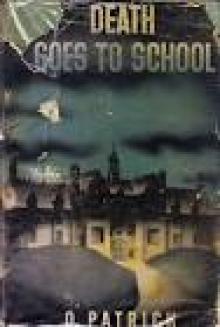 Death Goes to School
Death Goes to School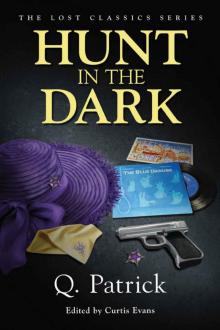 Hunt in the Dark
Hunt in the Dark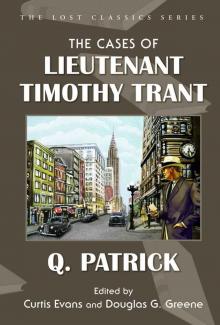 The Cases of Lieutenant Timothy Trant (Lost Classics)
The Cases of Lieutenant Timothy Trant (Lost Classics)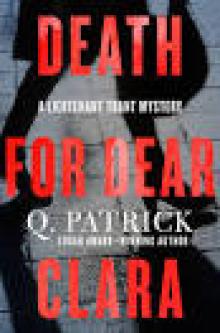 Death for Dear Clara
Death for Dear Clara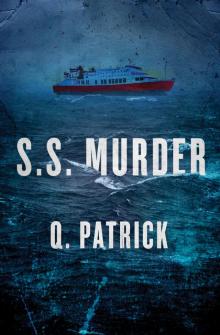 S.S. Murder
S.S. Murder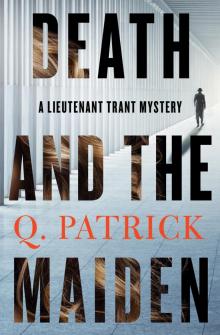 Death and the Maiden
Death and the Maiden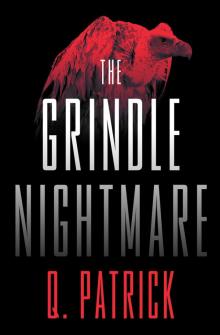 The Grindle Nightmare
The Grindle Nightmare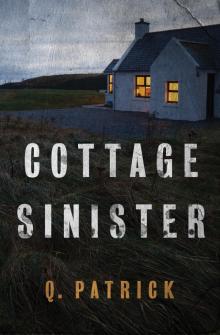 Cottage Sinister
Cottage Sinister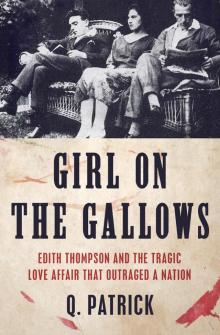 The Girl on the Gallows
The Girl on the Gallows